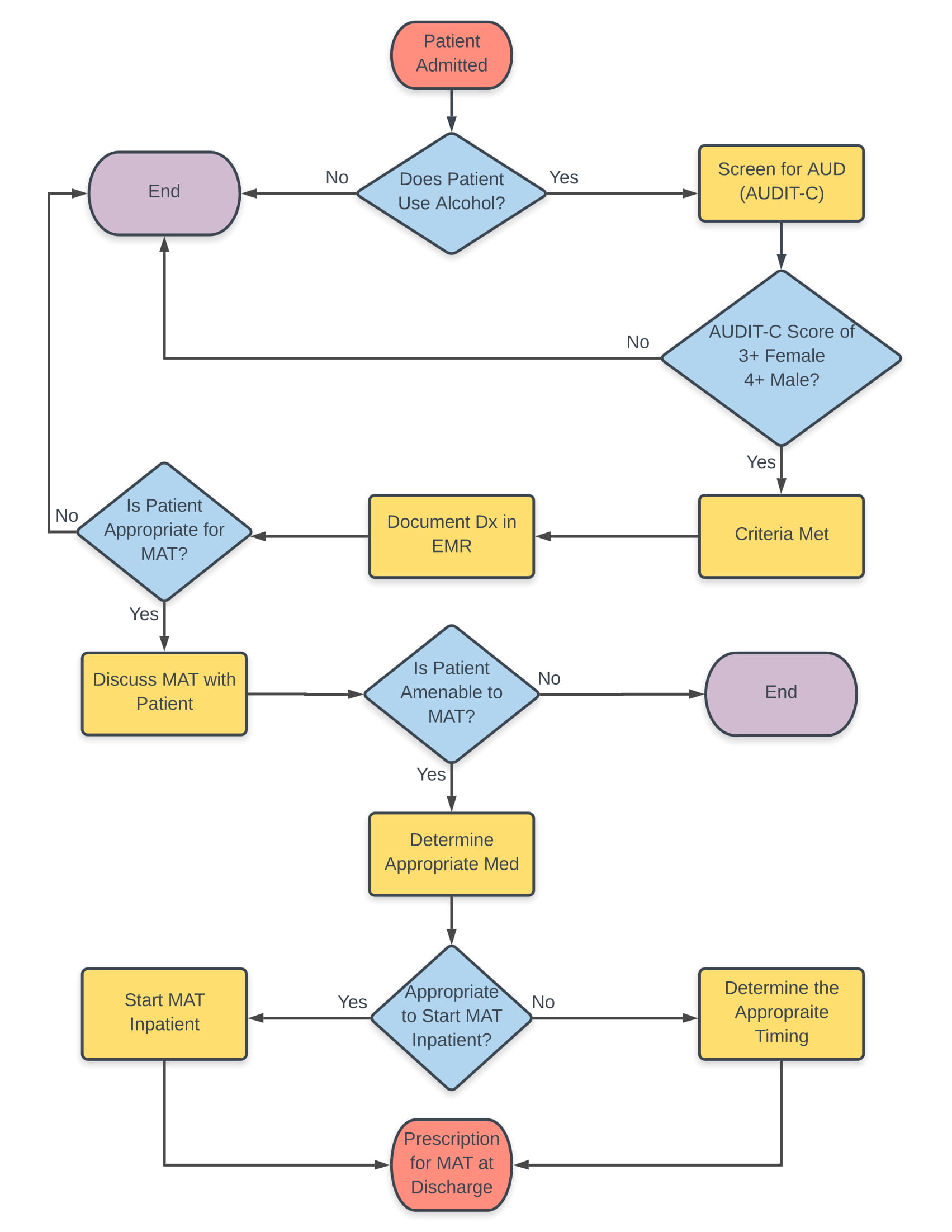Background: New Mexico has the highest number of alcohol-related deaths in the country, a title held since 1981. Nationally 1 in 10 deaths in working-aged adults are alcohol-associated whereas in New Mexico the ratio is 1 in 6 deaths. About 130,000 New Mexicans report alcohol dependence or abuse within the past year, but only 3% receive treatment. Inpatient stays treat acute illness for patients with alcohol use disorder, but fail to tackle the underlying cause: alcohol addiction.Medication assisted therapy (MAT) such as naltrexone and acamprosate are safe, cost effective, and the most efficacious medications in the treatment of alcohol use disorder. Despite the potential these medications have to reduce alcohol-associated hospital admissions, most patients with an alcohol use disorder do not receive MAT treatment.
Purpose: The aim of this quality improvement project is to increase the number of MAT prescriptions at discharge by 10% for hospitalized adult patients with alcohol use disorder-related diagnoses through the development and implementation of an electronic medical record order-set.
Description: A multidisciplinary team at a single center conducted a literature review to determine appropriate MAT for hospitalized adult internal medicine patients. The team developed an evidence-based guideline that identified first line medication for alcohol use disorder (naltrexone) and three alternatives (acamprosate, topiramate, and gabapentin) with considerations to patient substance use history, baseline labs, hepatic and renal function, and contraindications to MAT. The electronic medical record based order set was created with a process map for ordering MAT based on patient-specific needs. The alcohol use disorder order set was integrated into the electronic medical record. When initiated, the inpatient order-set automatically prompted providers to convert the selected MAT to prescriptions upon discharge. Next steps include multidisciplinary education, to promote the use of the alcohol use disorder order-set and overcome barriers for MAT discharge prescriptions.
Conclusions: There is a persistent treatment gap between the number of patients diagnosed with alcohol use disorder and those prescribed MAT in New Mexico. Treating the underlying disease is one way to decrease alcohol-related morbidity and potentially reduce the economic costs of alcohol use disorder.

